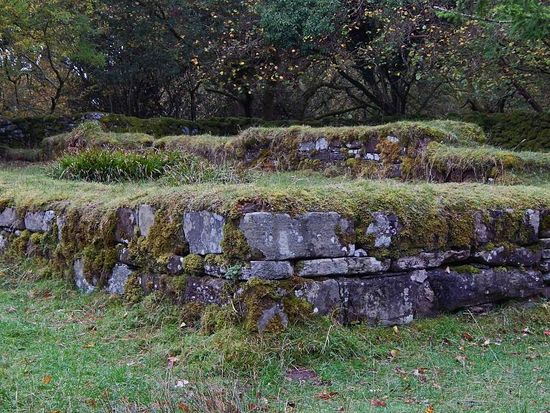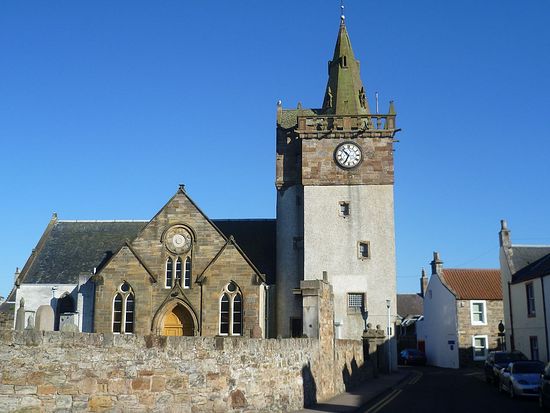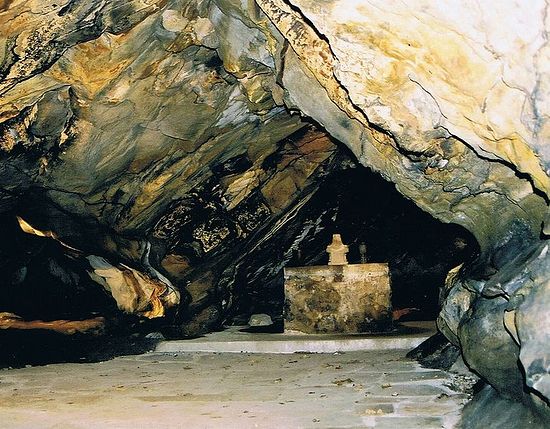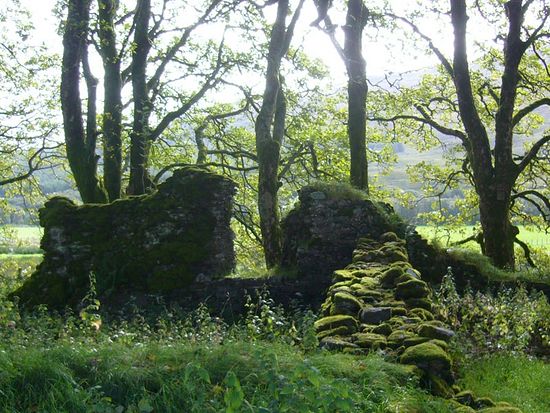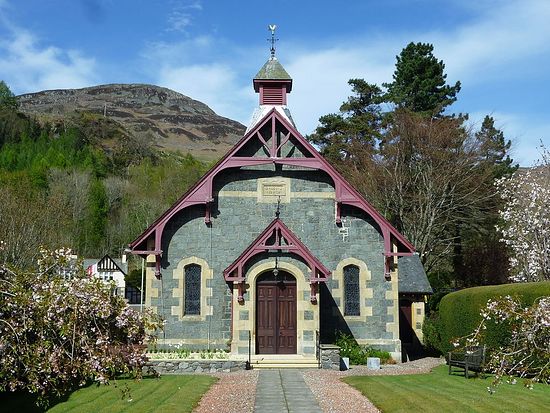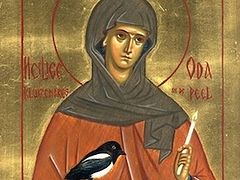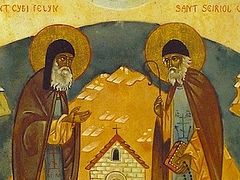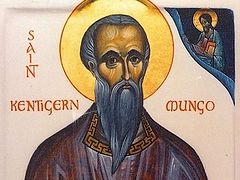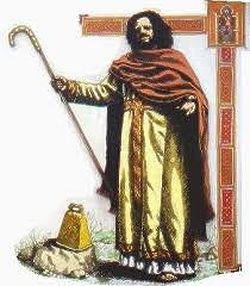
Unfortunately, the early lives of nearly all of them were either lost or else rewritten by Roman Catholics in late medieval times with many Catholic additions and thus their modern versions are not very reliable. But nevertheless we still know the basic information on most of these saints, at least when and where they lived, which churches and monasteries they established, with what other saints they communicated, which places they visited.
As was the case with Egyptian monks like St. Anthony the Great and St. Macarius the Great, or monks of the Kiev Caves Monastery and Optina, Celtic saints were very closely connected with each other. The monasteries they founded were interconnected as well and this continued on to following generations. Amazingly, Celtic holiness is unique for its “families of saints”, which were sometimes very large and included representatives of several generations. There was the spiritual relation between saints (spiritual fathers and mothers, their disciples, disciples of their disciples and so on); but besides this, there were many saints who were relatives by blood: holy parents and children and grandchildren, holy brothers and sisters, cousins, uncles, aunts, nephews and nieces. And by their holy life and prayers they hallowed the earth and the places where they lived, which can be felt even today when you visit them. We can only wonder at the piety and level of Christian life of that age. There are many examples of “family holiness” in Celtic lands. One of them is the example with the holy relatives Kentigerna, Fillan and Comgan.
Venerable Kentigerna of Inchebroida
Commemorated January 7/20
The holy woman Kentigerna († 734) is often called “an island anchoress.” She was a daughter of Kelly, prince (or, more exactly, chieftain) of Leinster in Ireland. Widowed, she left her native Ireland together with her saintly brother, Comgan, and her children, among whom was St. Fillan, and moved to Scotland in order to preach the Gospel of Christ to pagan people and evangelize some parts of the country that were still not Christian. With time she settled at Strathfillan, and later on the island of Inchebroida in present-day West Dunbartonshire (western central Scotland) where she lived as an anchoress for many years.
The name “Inchebroida” means “the isle of the eldress.” Today this island is commonly known as Inchcailloch, situated on Loch Lomond. In memory of the holy anchoress a ruined ancient church dedicated to St. Kentigerna can be found there to this day. She may also have founded a tiny convent on this island. Many Scottish hermits—holy men and women—settled on small isles and islets, including those situated on lakes (known as lochs in Scotland). Traces and remains of their churches and hermitage cells have survived on the sites where they led a solitary life well over 1000 years ago, constantly and fervently praying despite the severe cold of the north and threatening waves.
Venerable Fillan of Strathfillan
Commemorated January 9/22 and August 26/September 8
St. Fillan (Foelan) lived in the eighth century. He was born in Ireland; his mother was St. Kentigerna and his uncle was St. Comgan. From time immemorial he has been much venerated in both Ireland and Scotland. He may have been educated at Taghmon Monastery in Wexford (Ireland) under St. Fintan Munnu. Later, probably in about 717, he moved together with his mother and other relatives to Scotland. There he became a monk and lived the monastic life until the end of his life. It is known that for some time Fillan preached the Good News together with Sts. Kentigerna and Comgan and then retired to live as a hermit in a cave on the site of the present-day village Pittenweem (“the cave’s place”) in the county of Fife. This village was to become one of the most important places for his veneration. With time Fillan was appointed abbot of a monastery in Fife but after several years he gave up his abbacy and retreated to Glendochart (in Perthshire) where he lived alone in prayer and contemplation and finally built a church. Today a number of places and churches in the vicinity of Glendochart bear the name of the saint.
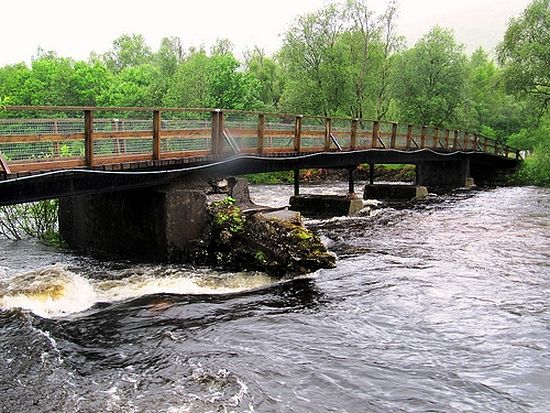 The river Fillan
The river Fillan
During his life Fillan by his prayer healed from many diseases the sick who flocked to him. The hermit worked miracles. Once, when he was abbot, a wolf ate one of his oxen while the saint was working in the field. The abbot commanded the wolf as a penance to plough up that part of the field instead of the ox that it had eaten. The wild wolf obeyed the saint and immediately fulfilled the task. The veneration of St. Fillan in Scotland was so strong that in 1314 the Scottish king Robert Bruce took the reliquary with the saint’s arm with him to the Battle of Bannockburn and attributed his victory over the English to the saint's intercession.
Fillan reposed and was buried in Strathfillan, the centre of his veneration. He probably built a church or a monastery on this site and preached to the local Pictish population. The cave of St. Fillan in Pittenweem survives to this day. After his death the cave became a destination for many pilgrims, and a holy well with healing power existed near it for many years. In late medieval times a small Augustinian priory, associated with the monastery on the Isle of May (in the outer Firth of Forth), was founded in Pittenweem and named after St. Fillan. Several centuries ago Fillan’s cave was left derelict and forgotten for a certain time. In about 1900, a horse that pastured in a local priory garden suddenly fell into an overgrown hole. When the hole was cleared it turned out that it was the saint’s cell, abandoned long before. Several stones which had healing properties owing to Fillan’s prayers were discovered in the cave together with the partly surviving holy well. In 2000, both the cave and the well were consecrated and opened for visitors.
The personal bell and staff of St. Fillan survive to this day: they are kept at the National Museum of Scotland in Edinburgh. In the past this bell was usually placed above those who suffered from severe headache—and the pain abated! In Strathfillan many lunatics were miraculously healed in ancient times. D.H. Farmer and other researchers write that mentally ill people used to be dipped into the Strathfillan well and then left for one night, tied up in a corner of St. Fillan's ruined chapel. If the following morning they were found loosed from their chains, they were considered to be completely cured. This practice existed until the first half of the nineteenth century. Today Strathfillan is a picturesque strath (a Scottish word meaning a broad, often mountainous, valley) in west Perthshire with the river Fillan flowing through it.
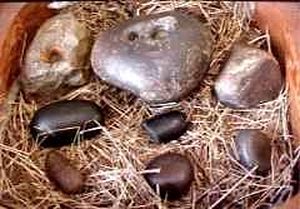 Healing stones of St. Fillan-1
Healing stones of St. Fillan-1
In the village of St Fillans in Perth and Kinross in central Scotland there is an ancient pre-Norman chapel dedicated to St. Fillan. According to local tradition, St. Fillan for some time lived on a hill nearby. An Episcopalian church in the village of Kilmacolm in Inverclyde is also dedicated to him. The nineteenth century Catholic church in the village of Houston in Renfrewshire in west central Scotland bears his name. There is also an ancient ruined church of St. Fillan not far from it, in the parish of Houston and Killellan. Close to the village there are two holy wells, dedicated to St. Fillan and St. Peter, which still have curative power. There are several other partly surviving early churches dedicated to this saint, scattered in different parts of Scotland, mostly on islands, which so much attracted Celtic saints by their severe beauty. Outside Scotland, St. Fillan is venerated in the Irish counties of Westmeath and Laois.
Venerable Comgan of Lochalsh
Commemorated October 13/26
According to tradition, St. Comgan (also known as Cowan) who lived in the eighth century was born in Ireland and was son of Kelly, prince of Leinster. He succeeded his father but was unjustly driven out of the country by representatives of small neighbouring kingdoms. So the saint went to Scotland with his sister Kentigerna and her three children, among whom was Fillan. There were seven companions with them. The missionaries landed in the Highlands in the north of Scotland. Soon Comgan settled at Lochalsh opposite the Isle of Skye (the largest island in the Inner Hebrides off the north-western coast of Scotland) where he founded a monastery and became its abbot. The saint, known as a great ascetic, lived here for many years; unfortunately, little is known about his other missionary activities. After the repose of St. Comgan, St. Fillan buried him on the famous monastic island of Iona and erected a church in his memory.
St. Comgan has been widely venerated in many parts of Scotland for many centuries. A number of settlements of Scotland bear the name of this saint, among them are Kilcongen, Kilchoan (in Highland, where there is a very ancient ruined church of St. Comgan in this westernmost Scottish village) and others. Several churches in this country are dedicated to him, and there are traces of his monastic and missionary activities in such places as Islay, North Uist, Ardnamurchan and Turriff.
Venerable Kentigerna, Fillan and Comgan, pray to God for us!


